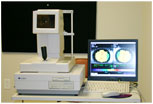NeoVision Provides Contact Lens Fitting Exams

About Contact Lenses
Contact lenses are delicately crafted, very thin, clear optical discs of plastic that float on the tear film that coats the cornea. The health of the corneal surface and tear film are very important to your comfort and the clarity of your vision when you are wearing contacts.
Contacts are popular because they do not change cosmetic appearance and provide better peripheral vision than glasses. In addition, contacts can reduce or eliminate the image distortion sometimes caused by eyeglasses. They also allow more freedom during recreational and sporting activities. Depending on your lifestyle, your motivation, and health of your eyes, contact lenses may provide a safe and effective alternative to eyeglasses when used with proper care and maintenance.
Contact lenses are used to correct the same refractive errors that eyeglasses correct. For example, myopia (near-sightedness), hyperopia (far-sightedness), astigmatism and some bifocal prescription can be corrected with contacts. NeoVision has many different types of contact lenses to choose from.
Different Types of Contact Lenses:
Many different plastics are used in the manufacture of contact lenses, but there are two general types of lenses: hard and soft. First Hard lenses were PMMA contacts that were developed in the 1960’s but are rarely used today. They are replaced by rigid gas permeable (RGP) contacts, which are similar to PMMA lenses in design and appearance but are made of a material that is permeable to gases such as oxygen and carbon dioxide. PMMA contacts were completely impermeable to gases.
RGP lenses may be the best choice when the cornea has high astigmatism (i.e. cylindrical power). These are also the best choice for conditions such as keratoconus, where the cornea is excessively conical in its curvature. They may also be preferable when a person has allergies or tends to form protein deposits on his or her contacts. RGP lenses last longer, are less likely to breed bacteria, disinfect more easily, do not dehydrate, and provide crisper vision than soft contacts. However, they usually cost more and take longer to adjust to than soft lenses.
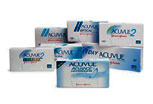 Soft lenses are made from a water absorbing material called HEMA (Hydroxy Ethyl Metha Acrylate). This water allows the eye to “breathe” through the contact lens. The water also gives them their flexibility. If you let a soft lens dry out, it becomes quite brittle. Soft lenses are very delicate to handle and are the choice of most contact lens wearers for their comfort. They are usually easy to insert and fit comfortably and securely.
Soft lenses are made from a water absorbing material called HEMA (Hydroxy Ethyl Metha Acrylate). This water allows the eye to “breathe” through the contact lens. The water also gives them their flexibility. If you let a soft lens dry out, it becomes quite brittle. Soft lenses are very delicate to handle and are the choice of most contact lens wearers for their comfort. They are usually easy to insert and fit comfortably and securely.
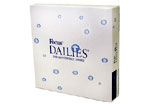
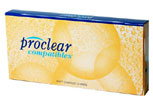 Soft contact lenses come in two basic forms; daily wear and extended wear. Daily wear lenses must be removed, cleaned and stored every day. These are the least expensive. They should not be worn while sleeping. Extended-wear lenses are designed for overnight wear. There is a greater risk of corneal infections with any overnight wear of contact lenses. Depending upon how frequently soft contact lenses need to be replaced, they can be daily, weekly, fortnightly, monthly, or quarterly type.
Soft contact lenses come in two basic forms; daily wear and extended wear. Daily wear lenses must be removed, cleaned and stored every day. These are the least expensive. They should not be worn while sleeping. Extended-wear lenses are designed for overnight wear. There is a greater risk of corneal infections with any overnight wear of contact lenses. Depending upon how frequently soft contact lenses need to be replaced, they can be daily, weekly, fortnightly, monthly, or quarterly type.
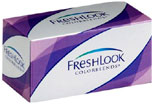 Soft contact lenses are available in different colors, in both powers as well as plano. These lenses can change the appearance of your eye color to varying degrees. Generally, enhanced contacts change light colored eyes, while the opaque contacts change dark colored eyes.
Soft contact lenses are available in different colors, in both powers as well as plano. These lenses can change the appearance of your eye color to varying degrees. Generally, enhanced contacts change light colored eyes, while the opaque contacts change dark colored eyes.
Toric soft contact lenses have both a spherical and cylindrical component. These lenses can correct astigmatism, although sometimes not as well as RGP lenses. They come in many different materials, sizes, and shapes. They can be worn on a daily wear or extended wear basis. They usually cost more than other contact lenses.
Bifocal soft contact lenses provide both distance and near vision. These lenses are somewhat more difficult to fit and may not provide satisfactory vision to all people. Some people like monovision correction to overcome their need for near vision contact lenses.
Contact Lens Fitting Exams
You’ll find that our contact lens evaluations and examinations are thorough. With proper contact lens evaluation and follow up, we determine if you can wear contact lenses safely and comfortably. We also determine the contact lens wearing schedule that is best suited for your unique lifestyle. It helps you look your best and perform to maximum efficiency. Our contact lens examination includes a thorough evaluation of corneal curvatures, tears, cornea, and lid health. It is essential that we measure the curvature and topography of the cornea prior to designing the contact lenses. During an extensive trial lens fitting, we’ll try several different lens types for fit and compatibility. Ongoing evaluations are conducted until you are completely satisfied.

